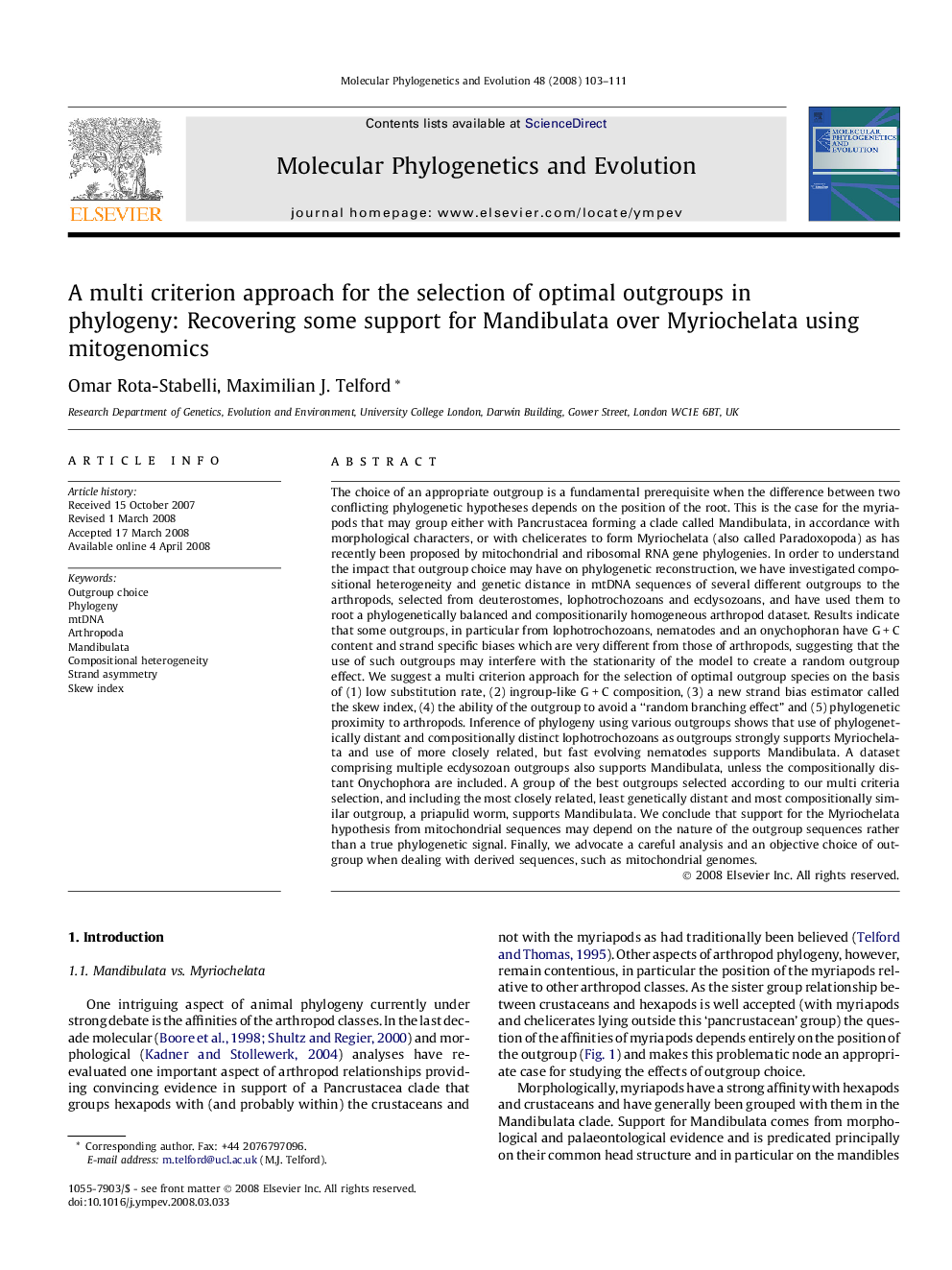| کد مقاله | کد نشریه | سال انتشار | مقاله انگلیسی | نسخه تمام متن |
|---|---|---|---|---|
| 2835194 | 1164335 | 2008 | 9 صفحه PDF | دانلود رایگان |

The choice of an appropriate outgroup is a fundamental prerequisite when the difference between two conflicting phylogenetic hypotheses depends on the position of the root. This is the case for the myriapods that may group either with Pancrustacea forming a clade called Mandibulata, in accordance with morphological characters, or with chelicerates to form Myriochelata (also called Paradoxopoda) as has recently been proposed by mitochondrial and ribosomal RNA gene phylogenies. In order to understand the impact that outgroup choice may have on phylogenetic reconstruction, we have investigated compositional heterogeneity and genetic distance in mtDNA sequences of several different outgroups to the arthropods, selected from deuterostomes, lophotrochozoans and ecdysozoans, and have used them to root a phylogenetically balanced and compositionarily homogeneous arthropod dataset. Results indicate that some outgroups, in particular from lophotrochozoans, nematodes and an onychophoran have G + C content and strand specific biases which are very different from those of arthropods, suggesting that the use of such outgroups may interfere with the stationarity of the model to create a random outgroup effect. We suggest a multi criterion approach for the selection of optimal outgroup species on the basis of (1) low substitution rate, (2) ingroup-like G + C composition, (3) a new strand bias estimator called the skew index, (4) the ability of the outgroup to avoid a “random branching effect” and (5) phylogenetic proximity to arthropods. Inference of phylogeny using various outgroups shows that use of phylogenetically distant and compositionally distinct lophotrochozoans as outgroups strongly supports Myriochelata and use of more closely related, but fast evolving nematodes supports Mandibulata. A dataset comprising multiple ecdysozoan outgroups also supports Mandibulata, unless the compositionally distant Onychophora are included. A group of the best outgroups selected according to our multi criteria selection, and including the most closely related, least genetically distant and most compositionally similar outgroup, a priapulid worm, supports Mandibulata. We conclude that support for the Myriochelata hypothesis from mitochondrial sequences may depend on the nature of the outgroup sequences rather than a true phylogenetic signal. Finally, we advocate a careful analysis and an objective choice of outgroup when dealing with derived sequences, such as mitochondrial genomes.
Journal: Molecular Phylogenetics and Evolution - Volume 48, Issue 1, July 2008, Pages 103–111